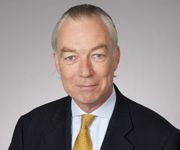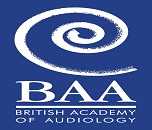Theme: Integrating the recent advancements in diagnosis of hearing disorders and treatment with latest industrial equipments
Hearing Devices-2015
We, OMICS International, the leading scientific conference organizers welcome you to attend the International Conference and Expo on Audiology and Hearing Devices during August 17-18, 2015 at Birmingham, UK. Special interest and theme of the conference is “Integrating the recent advancements in diagnosis of hearing disorders and treatment with latest industrial equipments”.
Hearing Devices 2015 will be the place to expose the new techniques and updated information on hearing devices. More information on the audiology will be available for interested individuals to make plans to attend this important learning event.We aim at bringing together a large International population from various hearing based research & therapeutic institutions, leading universities, government organizations and rehabilitation centers at the same stage.
There are more than 10 million people in the UK with some form of hearing loss, or one in six of the population. By 2031, it is estimated that there will be 14.5 million people with hearing loss in the UK. More than 8,00,000people in the UK are severely or profoundly deaf. There are more than 45,000 deaf children in the UK. There are approximately 3,56,000 people with combined visual and hearing impairment in the UK.
Hearing Devices 2015 focuses on the latest advancements in the field of auditory rehabilitation, hearing aids, treatment technologies, implantable technologies and advancement in treatment. This two day event provides a perfect platform for leading scientists, researchers, decision-makers and other players to gain the latest information on topics of current research on diagnostics in adult & pediatric audiology and its significance in clinical research and health diagnostics.
OMICS International organizes 300+ International Conferences Every Year across USA, Europe & Asia with support from 1000 more scientific Societies and publishes 400+ Open Access Journals which contains over 30000 eminent personalities, reputed scientists as editorial board members. For more..
Track 1: Audiology: Medicine and Instrumentation
Audiological Medicine covers the field of hearing, balance and communication disorders, Ear anatomy and ototoxicity. Audio vestibular medicine is the medical specialty concerned with the diagnosis and management of hearing and balance disorders in adults and children. It also involves the management of people with tinnitus, dysacuses (conditions where ordinary sounds produce discomfort or pain) and communication disorders. Hearing devices symposiums and Research on audiology also includes Epidemiological studies.
Auditory processing disorder (APD), also known as central auditory processing disorder (CAPD) that affect the way the brain processes auditory information. Hearing devices workshops can give the more knowledge on auditory disorders. We find also changes in neuro-anatomy and physiology and auditory neuroscience. Clinical phonology and motor speech disorders is a branch of linguistics. It is concerned with the study of the sound systems of languages. The aims of phonology are to demonstrate the patterns of distinctive sound contrasts in a language, and to explain the ways speech sounds are organized and represented in the mind. Computer-based auditory processing is a computer based curriculum may be part of the educational answer for children with auditory processing problems.
Track 3: Diagnostics in Audiology
An otoacoustic emission (OAE) is a sound which is generated from within the inner ear. Studies have shown that OAEs disappear after the inner ear has been damaged, so OAEs are often used in the laboratory and the clinic as a measure of inner ear health. Videonystagmography (VNG) is a technology for testing inner ear and central motor functions, a process known as vestibular assessment. Dichotic listening is a psychological test commonly used to investigate selective attention within the auditory system and is a subtopic of cognitive psychology and neuroscience. Latest audiology diagnostic tools include Diagnostic Audiometer, canal symposiums which can easily perform routine air and bone conduction threshold audiometry, but it also comes with portable application as well.
Track 4: Hearing: Biology and Physiology
In hearing devices congress discussions on Biological aspects of audiology include auditory physiology and mechanism in which mechanical waves known as vibrations are detected by the ear and transduced into nerve impulses that are perceived by the brain. Biology and physiology matters of hearing include Clinical Linguistics patterns and structure applications in hearing and Electrophysiological test procedures that is evaluations including Auditory Brainstem Response and Otoacoustic Emissions.
The field of pediatric otolaryngology has undergone significant changes over the past two decades. Many societies and associations are providing audiological service for the pediatric population. Newborn screening is completed before a baby is 1 month of age. If a baby does not pass the newborn screening, the next step is Diagnostic Audiology. The initial diagnostic tests must be completed as soon as possible so that any potential hearing loss can be diagnosed before 3 months of age. A baby identified with a hearing loss should undergo hearing aid services-selection and fit with hearing aids and enrolled in an early intervention program well before 6 months of age. The diagnostic Verification and validation is performed by a pediatric audiologist. The tinnitus maskers conferences and audiologist performs a series of tests, described below, to determine if a hearing loss exists, and, if so, the type (part of the auditory system affected), degree (how much hearing loss exists) and configuration (frequencies or pitches that are affected) of the loss.
Track 6: Hearing Loss and Prevention
Etiological and medical causes of hearing loss includes excessive noise exposure damages the delicate hair cells in the inner ear may causes Spatial hearing loss, not dissimilar to the effect of age on the ear (accelerated "wear and tear"). This damage often results in permanent, sensorineural hearing loss and tinnitus (ringing of the ears). Noise detection workshops, Noise pollution and hearing conservation is other major cause, hazardous noise exposures can occur on the job, which leads to Noise induced hearing loss. There are many hearing screening technologies and follow-up strategies which should be used. An effective hearing conservation and protective Devices can prevent hearing loss.
Track 7: Auditory Rehabilitation
Adult, aural/audiologic rehabilitation services will focus on adjusting to your hearing loss, by using rehabilitation techniques making the best use of your hearing aids, exploring assistive devices that might help, managing conversations, and taking charge of your Auditory perception of speech & speech reading. Auditory ecology congress Services can be individual, in small groups, or a combination of both. Pediatric and Adult Rehabilitation Centers facility experienced in speech-language pathology, occupational therapy, physical therapy, Linguistic communication and educational programs, educational, and behavioral services tailored to fit the therapeutic needs of children, gives Counseling and sign language.
Track 8: Auditory Neurophysiology
In audiology symposiums, Auditory neurophysiology is a medical specialty that studies the central and peripheral nervous systems through the recording of bioelectrical activity, whether spontaneous or stimulated. It encompasses both research regarding the pathophysiology along with clinical methods used to diagnose diseases involving both central and peripheral nervous systems. Examinations in the auditory neurophysiology field are not limited to tests conducted in a laboratory. Neuromaturation and plasticity is age independent and allows to learning throughout the life. This type of brain modifications are viewed as life time process. Auditory neuropathy is a hearing disorder in which sound enters the inner ear normally but the transmission of signals from the inner ear to the brain is impaired. Auditory neuroscience account of hearing in terms of the neural processes that take place in different parts of the auditory system. Aging factors and degenerative neurologic disorders is one of the other factors which come under Auditory Neurophysiology. Neuroscientific advances and research in neurophysiology made easier to for diagnosis. Neurotology & skull base anatomy studies offers a straightforward overview of the anatomy, physiology, and pathophysiology of the temporal bone and central auditory and vestibular pathways.
Track 9: Hearing Aids and Treatment Technology
Hearing Aids a small amplifying device which fits on the ear, worn by a partially deaf person. In hearing devices conferences Electroacoustic performance of hearing aids is most conveniently measured. Earmolds, ear mold acoustics, Earmolds are the plastic part of your BTE hearing instrument which connect the ear canal to the hearing aid and literally place the sound in your ear. A digital hearing aid instruments is a hearing aid device that receives sound and digitizes it (breaks sound waves up into very small, discrete units) prior to amplification. A traditional analog hearing aid simply makes the sound wave larger to amplify sounds.
Track 10: Implantable Technologies and Advancement in Treatment
The field of Physiological bases of the cochlear implant has undergone significant changes over the past two decades. Radioâ€imaging of the auditory system is one of the recent advancement for the treatment from hearing loss. Microâ€anatomy of the cochlea & its neural connections studies result in the growth of implant technologies and treatment techniques. Bioâ€films in relation to ear implants present a new challenging concept in sustaining chronic, common antibiotic-resistant ear, nose, and throat (ENT) infections. Asepsis & antiâ€sepsis protocols in implant the measures to prevent an infection from entering a wound are referred to as asepsis, while those to cause the exclusion or destruction of harmful microbes are generally called antisepsis. Recent advances and future directions in implant otology and audiology will bring up the mark for the hearing aid technology.
Conference Highlights
- Audiology: Medicine and Instrumentation
- Auditory Disorders
- Diagnostics in Audiology
- Hearing: Biology and Physiology
- Pediatric Audiology
- Hearing Loss and Prevention
- Auditory Rehabilitation
- Auditory Neurophysiology
- Hearing Aids and Treatment Technology
- Implantable Technologies and Advancement in Treatment
To share your views and research, please click here to register for the Conference.
To Collaborate Scientific Professionals around the World
| Conference Date | August 17-18, 2015 | ||
| Sponsors & Exhibitors |
|
||
| Speaker Opportunity Closed | Day 1 | Day 2 | |
| Poster Opportunity Closed | Click Here to View | ||
Useful Links
Special Issues
All accepted abstracts will be published in respective Our International Journals.
- Journal of Communication Disorders, Deaf Studies & Hearing Aids
- Journal of Otology & Rhinology
- Otolaryngology
Abstracts will be provided with Digital Object Identifier by























